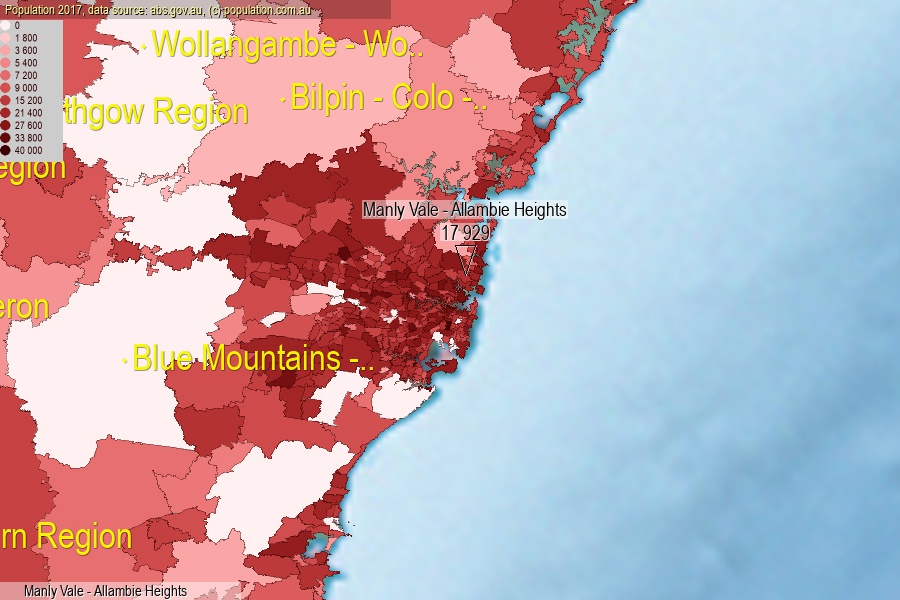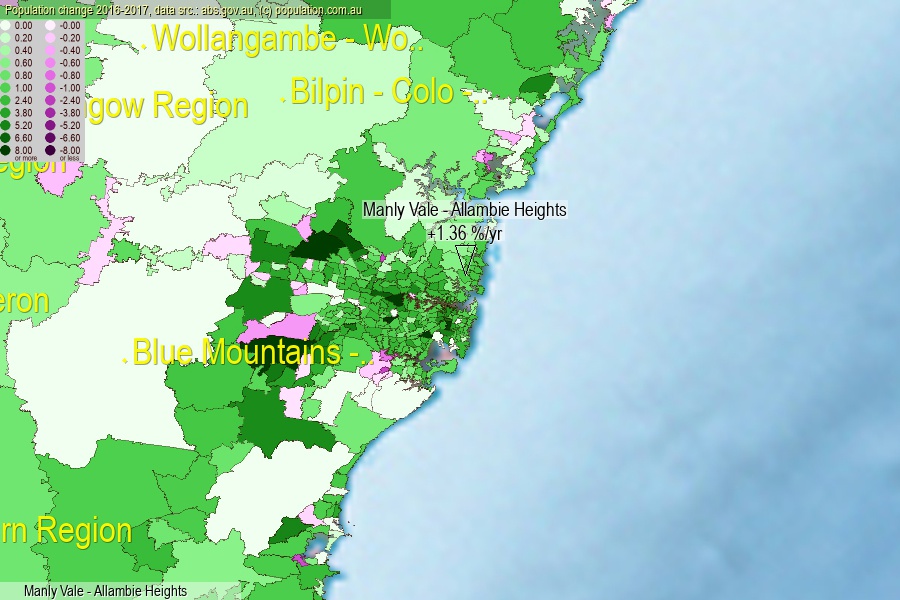 population.com.au
population.com.auLast official estimated population of Manly Vale - Allambie Heights (as Statistical Area Level 2) was 17 929 people (on 2017-06-30)[2]. This was 0.07% of total Australian population and 0.225% of NSW population. Area of Manly Vale - Allambie Heights is 9.40 km², in this year population density was 1 907.34 p/km² . If population growth rate would be same as in period 2016-2017 (+1.36%/yr), Manly Vale - Allambie Heights population in 2025 would be 19 979. [0]



Click to enlarge. Manly Vale - Allambie Heights is located in the center of the images.
Population [people], population density [p./km²] and population change [%/year] [2]
View borders » (new window) [4]
[1991-1992] -0.34 %/Yr.
[1992-1993] -0.57 %/Yr.
[1993-1994] +0.03 %/Yr.
[1994-1995] +0.29 %/Yr.
[1995-1996] +1.45 %/Yr.
[1996-1997] -0.47 %/Yr.
[1997-1998] -0.51 %/Yr.
[1998-1999] +2.48 %/Yr.
[1999-2000] +3.37 %/Yr.
[2000-2001] +1.56 %/Yr.
[2001-2002] -0.46 %/Yr.
[2002-2003] -0.52 %/Yr.
[2003-2004] -0.02 %/Yr.
[2004-2005] +0.23 %/Yr.
[2005-2006] +0.95 %/Yr.
[2006-2007] +1.93 %/Yr.
[2007-2008] +1.90 %/Yr.
[2008-2009] +1.59 %/Yr.
[2009-2010] +2.01 %/Yr.
[2010-2011] +1.31 %/Yr.
[2011-2012] +1.03 %/Yr.
[2012-2013] +1.12 %/Yr.
[2013-2014] +1.19 %/Yr.
[2014-2015] +1.27 %/Yr.
[2015-2016] +1.31 %/Yr.
[2016-2017] +1.36 %/Yr.
[0] Calculated with linear interpolation from officially estimated population
[1] Read more about SA2 and Australian Statistical Geography Standard (ASGS) on abs.gov.au
[2] Population data from Australian Bureau of Statistics (Population and density: 2017; change: 2016-2017)
[3] Digital Boundaries: Australian Statistical Geography Standard (ASGS) 2016.
[4] Border coordinates are simplifyed using Ramer-Douglas-Peucker algorithm.